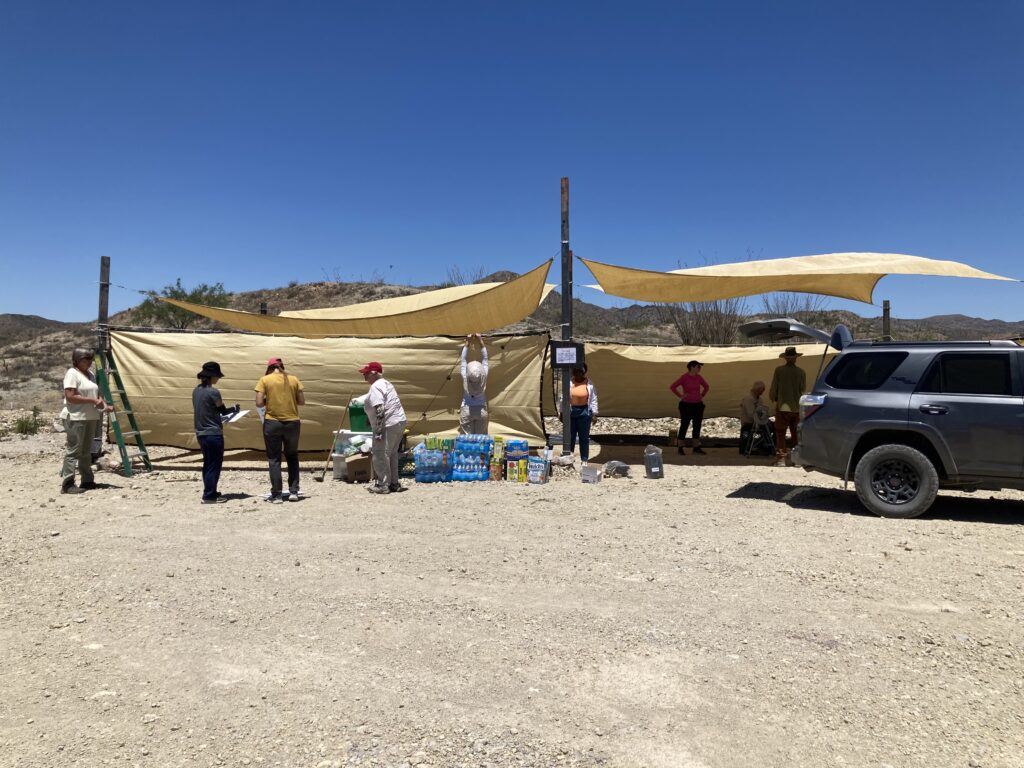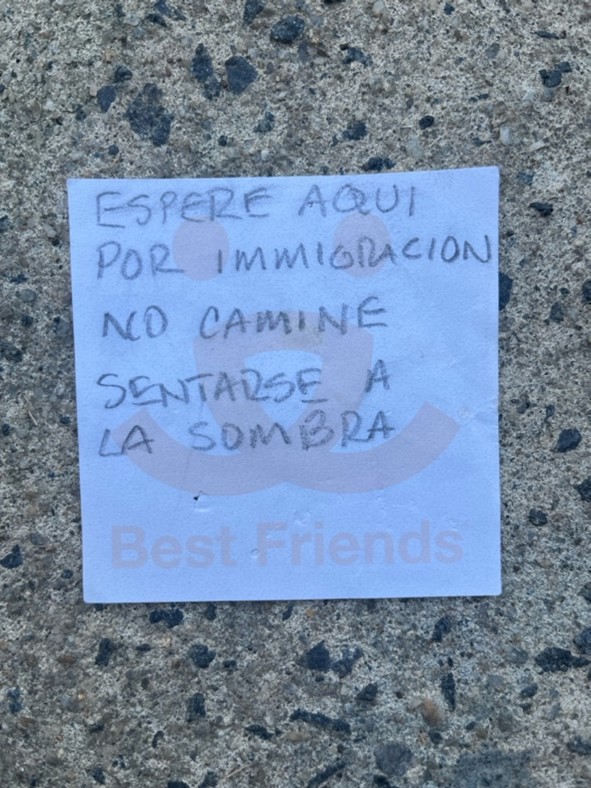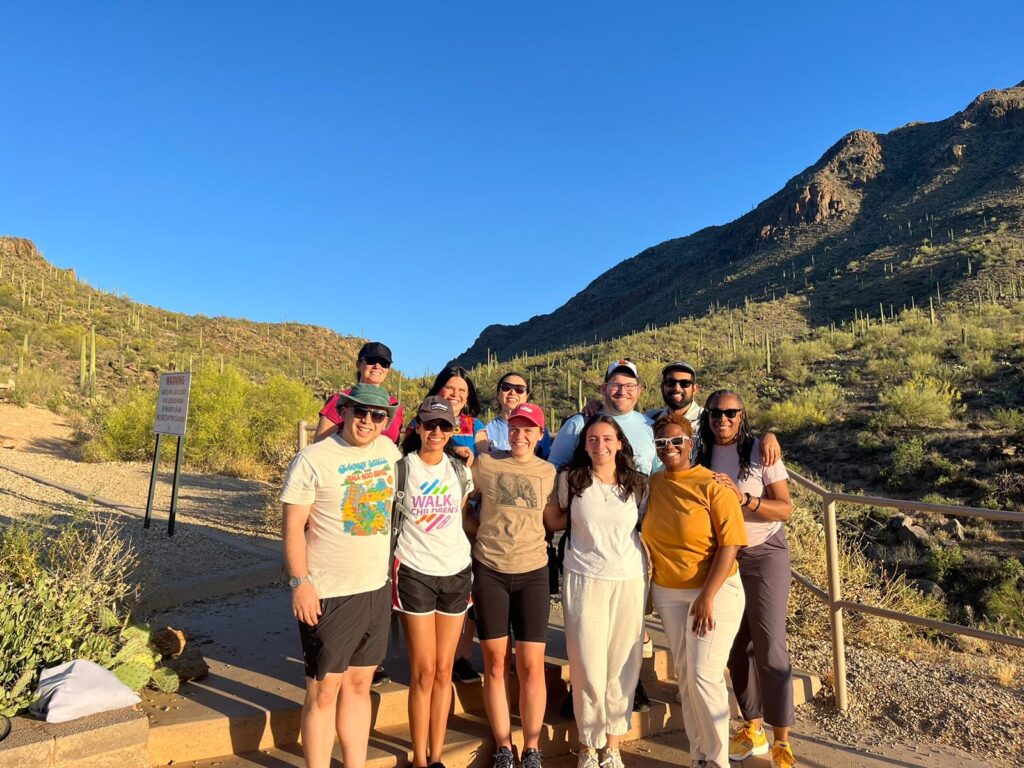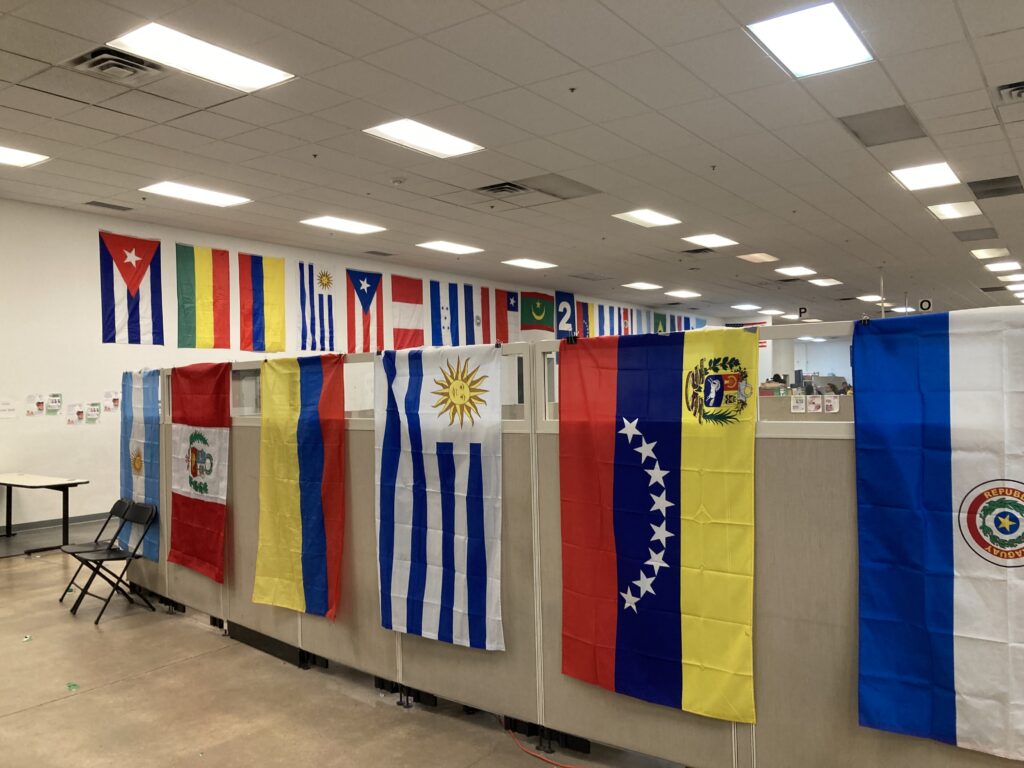Wednesday, May 29, 2024
Hello again from Tucson!
Yesterday was an interesting and eye-opening day as it was my first time seeing the border wall. We went out with a group called the Tucson Samaritans to build a temporary shelter and transport supplies for migrants after they had crossed. Tucson Samaritans is a volunteer-led humanitarian aid group that provides food, shelter, and basic supplies for migrants crossing the border to try and minimize migrant suffering and death.
Seeing the border wall in person is intense – a looming 30 foot wall of metal bars spaced just wide enough apart so you can see through but not wide enough for someone to fit through. On the top is a large metal plate with a beveled edge to try and deter people from climbing over it. It is harsh and unnatural, yet as we drove by I could see it was littered with discarded clothing, bottles of water, and trash – evidence of the people it is trying to keep out. We drove along many miles of the wall coming from the town of Sasabe, then arrived at the end where there is a gap with a shorter fence. There we learned is the new unofficial crossing where many migrants will cross every day.
We encountered one group of migrants who had recently crossed and we stopped to give them sandwiches and water. While we were there, a CBP officer drove up and told them to wait here for a transport van to come and pick them up. We waited with them for a few minutes until we were assured that they had sufficient food and water and the van was on its way. Seeing this group of people made me a bit emotional, as they carried nothing with them other than a small backpack and the clothes on their backs. I found it difficult to know what to say to them, as I cannot even begin to comprehend the physical and emotional stress of their journeys, or how much longer they would have to endure.
When people cross the border, they can choose to voluntarily turn themselves in to border patrol to see if they are eligible to seek asylum, which is common for most of those crossing, especially families. Border patrol makes pick-ups every day at 8am, 2pm, 8pm, and 2am, so it could be that sometimes people are waiting out in the heat for several hours. Samaritan groups started building temporary shelters and “camps” with food, water, and basic supplies near the wall to provide a place out of the heat to prevent further injury or death due to dehydration. These camps also make it easier for CBP to see groups of migrants to pick them up. We spent all day near the unofficial crossing and helped Samaritans build a large shelter, dig latrines, and transport supplies. Once we had the tarps up on the shelter, I could feel the distinct difference between the sun and the shade. I can see how something as simple as the shade can provide much-needed protection and has the potential to save lives.


When we finished and started driving back to Tucson, I reflected on the physical and political symbol of the border wall. As we drove on the incredibly steep dirt road along the wall, we talked about the tragedy of the many migrant deaths that have occurred in this beautiful yet harsh desert landscape (seen here in a map created by Humane Borders). Our Samaritans guide appropriately stated: “you have to hold the beauty with the tragedy, they cannot be separated”. Just as the giant metal wall cuts abruptly through the beautiful landscape of the Sonoran mountains, the policies that it represents cast a dark shadow on the freedoms and opportunity in our beautiful nation.
Quenla


